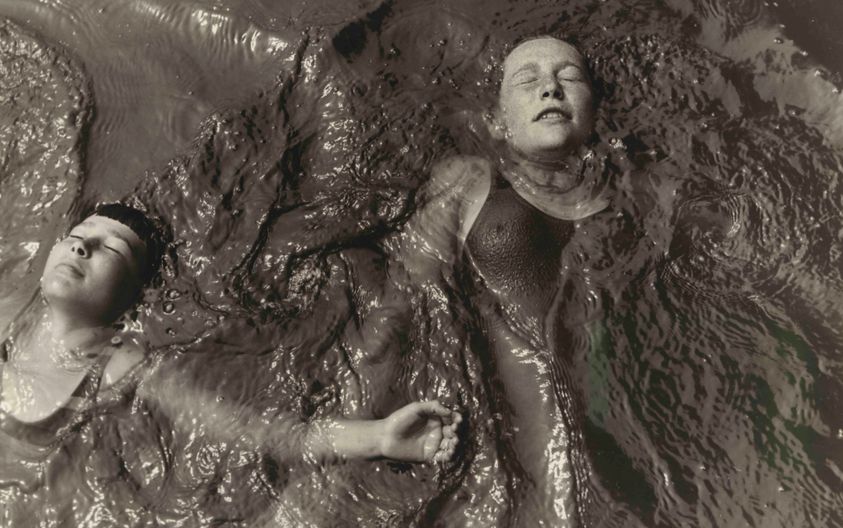Tra il 1977 e il 1997 il collezionista tedesco Thomas Walther raccolse le migliori opere fotografiche prodotte nella prima metà del XX secolo, in particolare a cavallo delle due guerre, dando vita ad una collezione unica al mondo, per quantità e per rarità, che come nessun’altra documenta lo sviluppo della fotografia ed il ruolo da essa assunto nell’ambito delle avanguardie. Oltre 230 opere fotografiche della collezione Thomas Walther, acquisita dal MoMA-Museum of Modern Art di New York, possono essere ammirate per la prima volta in Italia fino al 26 giugno da CAMERA-Centro Italiano per la Fotografia, in occasione della mostra «Capolavori della fotografia moderna 1900-1940».
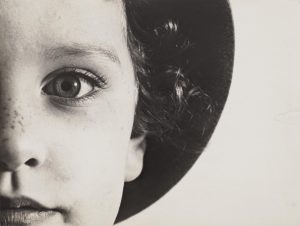
Lotte (Eye), 1928
Gelatin silver print, 30.2 × 40 cm
The Museum of Modern Art, New York
Thomas Walther Collection. Acquired through
the generosity of Peter Norton
© Max Burchartz, by SIAE 2021
© 2021 Max Burchartz / Artists Rights Society
(ARS), New York / VG Bild-Kunst, Germany
Digital Image © 2021 The Museum
of Modern Art, New York
Si tratta di scatti di grande importanza storica e valore artistico realizzati da ben 121 autori che hanno saputo ridefinire i canoni della fotografia anche attraverso la sperimentazione di tecniche come collages, doppie esposizioni, immagini cameraless e fotomontaggi. Attraverso immagini iconiche di grandi maestri della fotografia e opere rare di autori poco conosciuti, viene raccontato il fervore creativo che ha attraversato i primi quattro decenni del secolo passato.
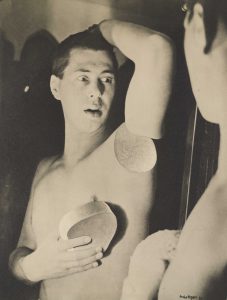
Humanly Impossible (Self-Portrait), 1932
Gelatin silver print, 38.9 x 29.3 cm
The Museum of Modern Art, New York
Thomas Walther Collection. Acquired through
the generosity of Howard Stein
© Herbert Bayer, by SIAE 2021
© 2021 Artists Rights Society (ARS), New York
/ VG Bild-Kunst, Bonn
Digital Image © 2021 The Museum
of Modern Art, New York
Accanto ad immagini iconiche di fotografi americani come Alfred Stieglitz, Edward Steichen, Paul Strand, Walker Evans o Edward Weston ed europei come Karl Blossfeldt, Brassaï, Henri Cartier-Bresson, André Kertész e August Sander, troviamo anche un numero significativo di donne, come Berenice Abbott, Kate Steinitz, Marianne Breslauer, Claude Cahun, Lore Feininger, Florence Henri, Irene Hoffmann, Lotte Jocobi, Lee Miller, Germaine Krull, Lucia Moholy, Leni Riefenstahl e molte altre.

Fork, 1928
Gelatin silver print, 7 x 9.2 cm
The Museum of Modern Art, New York
Thomas Walther Collection. Grace M. Mayer Fund
© Estate of André Kertész
Digital Image © 2021 The Museum
of Modern Art, New York
Oltre ai capolavori della fotografia del Bauhaus (László Moholy-Nagy, Iwao Yamawaki), del costruttivismo (El Lissitzky, Aleksandr Rodčenko, Gustav Klutsis), del surrealismo (Man Ray, Maurice Tabard, Raoul Ubac), sono esposte anche le sperimentazioni futuriste di Anton Giulio Bragaglia e le composizioni astratte di Luigi Veronesi, due fra gli italiani presenti in mostra insieme alla triestina Wanda Wulz e Tina Modotti.
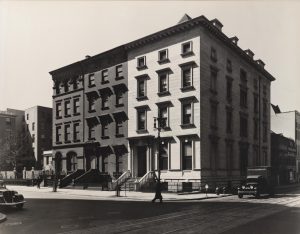
Fifth Avenue, Nos. 4, 6, 8, Manhattan
March 20, 1936
Gelatin silver print, 38.6 x 49.5 cm
The Museum of Modern Art, New York
Thomas Walther Collection. Gift of Mr. Robert
C. Weinberg, by exchange
© 2021 Estate of Berenice Abbott
Digital Image © 2021 The Museum
of Modern Art, New York
Emanuele Rebuffini
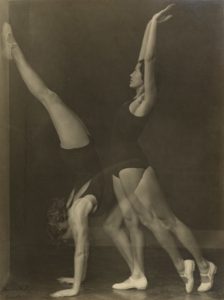
Exercise, 1932
Gelatin silver print, 29.2 x 21.9 cm
The Museum of Modern Art, New York
Thomas Walther Collection. Abbott-Levy
Collection funds, by exchange.
New York, Museum of Modern Art (MoMA)
Digital Image © 2022 The Museum
of Modern Art, New York/Scala, Firenze
